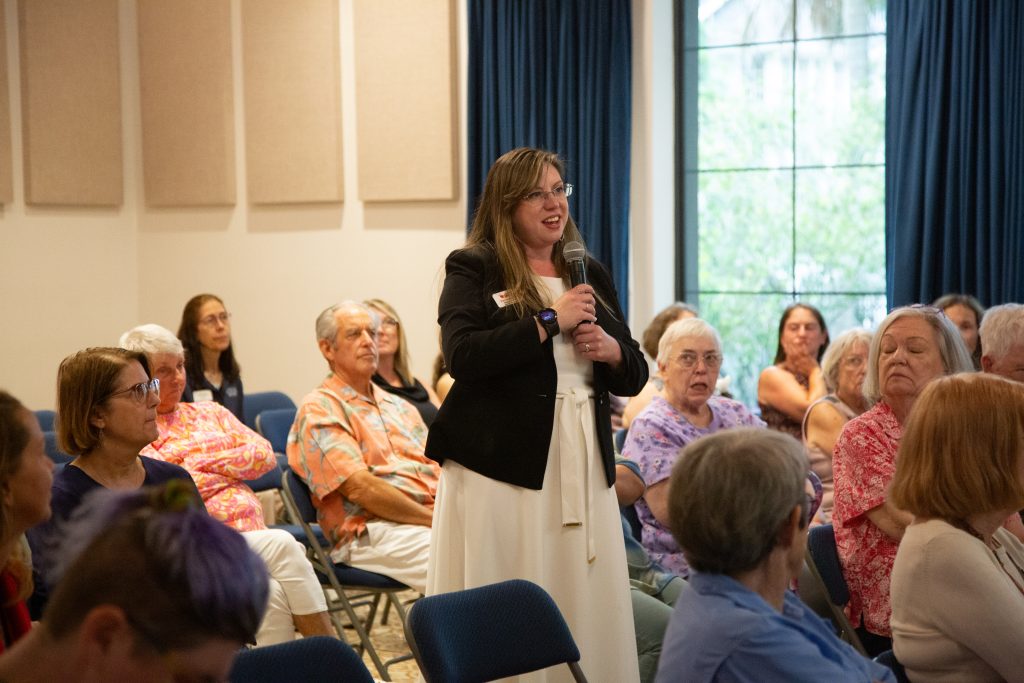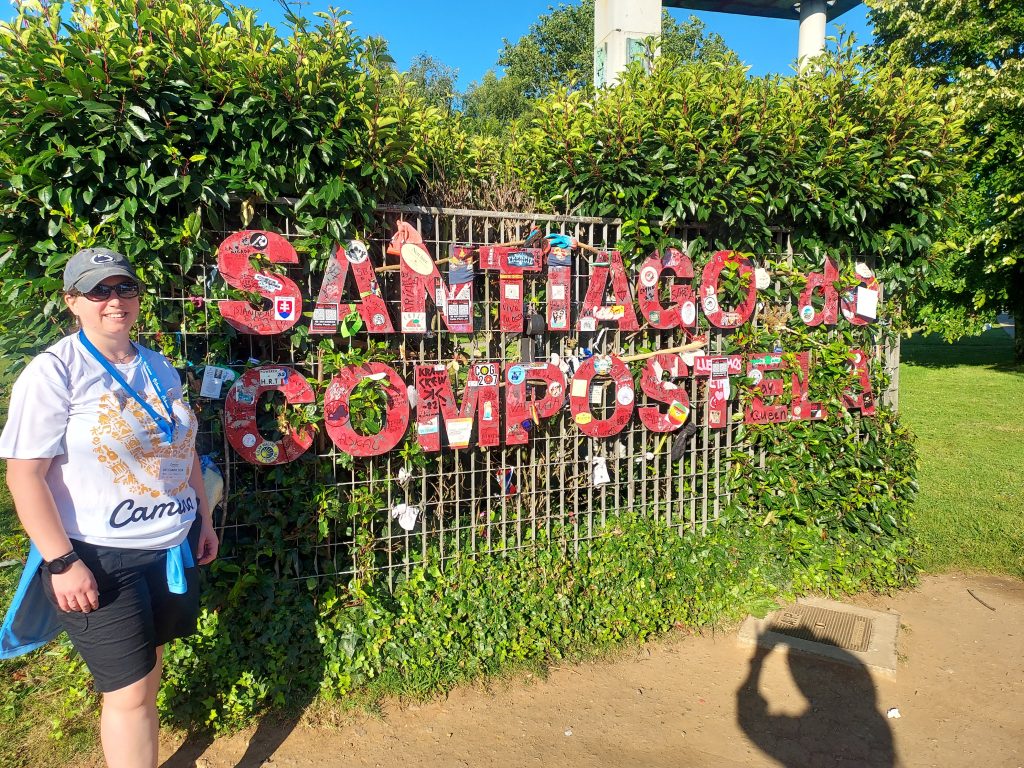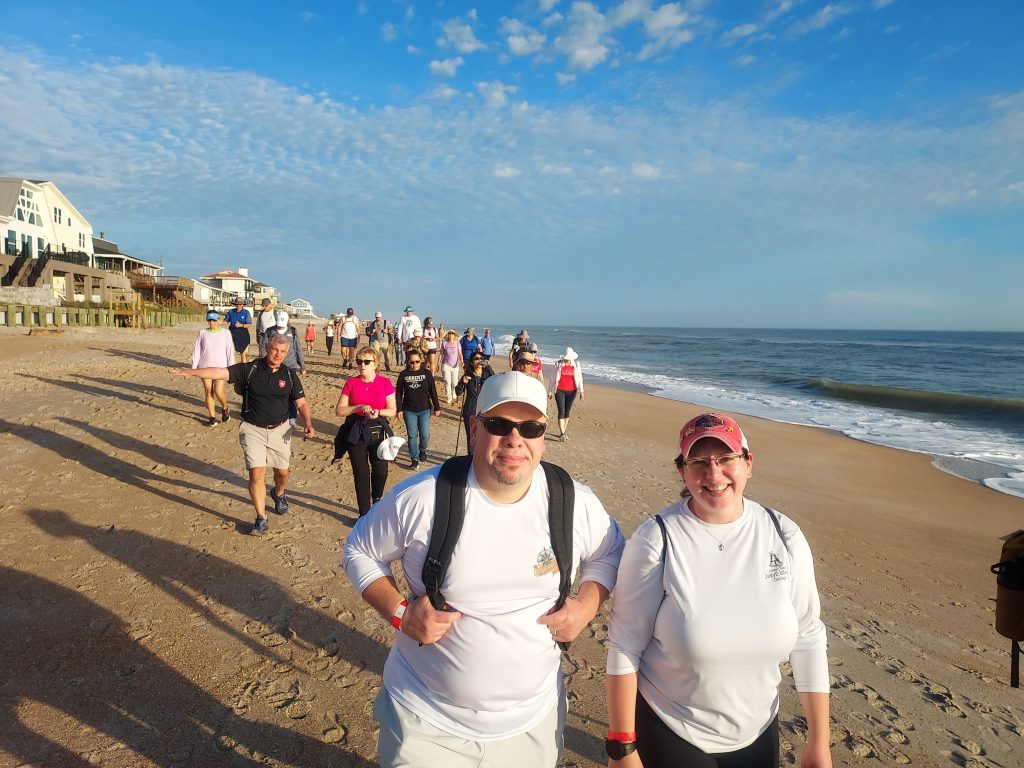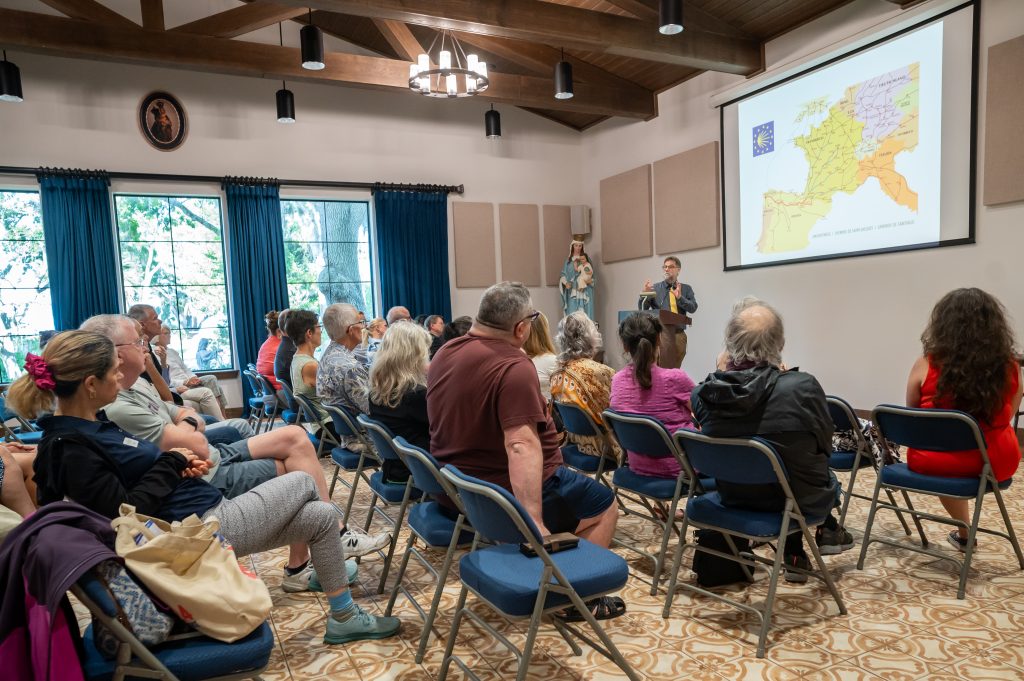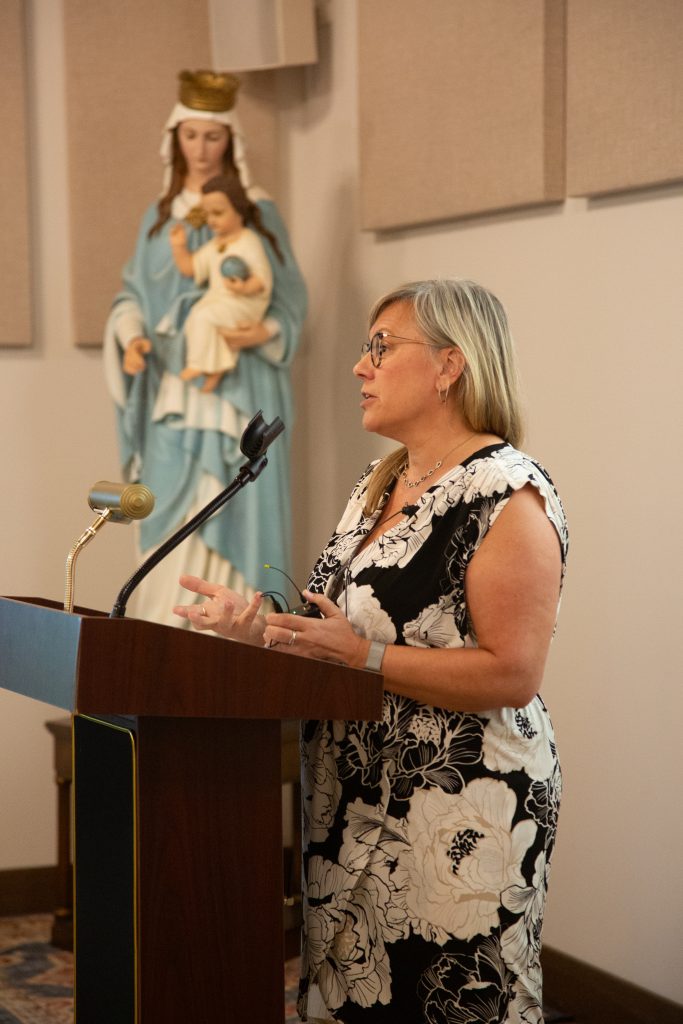The month of May was a full one for the Archives & Records Management Office staff. We hosted a two-part lecture series for the St. Augustine History Festival to emphasize the Diocese’s historical connection to the city and this year, celebrate our founding role in establishing the Camino de las Américas.
Telling any city’s story can be a bit problematic, as details are not always agreed upon, and the human brain can only recall so much. While St. Augustine does administer a test for tour guides to prove they know milestone events, about 10 years ago lawsuits were brought against several historical cities (New Orleans, La., Savannah, Ga. and St. Augustine, Fla.) challenging their right to control the narrative. The result negated requirements for interpreters to pass a knowledge test to obtain a historical tour guide license. On the one hand, this ruling allows little heard voices from the periphery (such as black or Indigenous Floridians) the facility to share their experience within the city’s historical context. But this also gives equal weight to information disseminated by tour service guides who are great storytellers but lack the skills to perform competent historical research and contextualization. You can hear examples of the latter guide if you sit at the Shrine Trolly stop for a couple of hours any day of the week.
The St. Augustine History Festival began three years ago in 2021 (coincidentally the same year I started with the diocese) to educate tourists and locals on St. Augustine’s history (https://www.staugustinehistoryfestival.com/). It is an effort spearheaded by the University of Florida as the owner of the most historic properties in St. Augustine (a surprising fact I recently learned). Each year brings more participating venues and engaging lectures.
Participating sites are encouraged to host a special event or drop tour fees during the festival dates (though not all do). Since the diocesan archives are currently located in St. Augustine, I felt it was important to participate.
This year, we hosted two lectures, both in celebration of the Camino de las Américas. For the unaware, the Camino de las Américas is a collaborative project between the Cathedral Basilica of St. Augustine, Diocese of St. Augustine, Alliance of Cathedrals and the Cathedral in Santiago de Compostela to bring the Camino de Santiago de Compostela to theAmericas. The Camino is a network of pilgrimage routes that began in the 9th century and stretch through Europe, all terminating at the tomb of St. James in the Northwest of Spain (https://catedraldesantiago.es/en/pilgrimage/). While we are working to establish approved routes through the Diocese of St. Augustine’s territory, our Spanish collaborators hope to eventually establish a full network of pilgrimage trails between Santiago, Chile and St. Augustine, Fla. I have heard talk of potential routes running south through Florida (from St. Augustine to Tampa and Miami), as well as routes running West to Pensacola, Texas and California.
In Florida, routes are being mapped out using the historic Camino Real. The Camino Real was established by the Spanish in the 16th and 17th centuries as an overland “Royal Road” to connect settlements and missions. The road followed an older network of Indian trade routes and footpaths. When the Camino Real is mentioned today, many know of its Spanish cultural connection, but fewer are aware of its indigenous origin.
Our first lecturer, Dr. Denise Bossy of the University of North Florida, was invited to share that Indigenous origin. During her talk, entitled Before, During and After the Camino Reales: Indigenous Women and the Indigenous Origins of Indigenous Networks Across La Florida, Dr. Bossy discussed the hallmarks of the Mississippian indigenous culture (to which the Timucua-speaking Mocama belonged) and the important women’s role within it. This was used as a framework to understand why and how trade routes developed, were maintained and were abandoned.
Dr. Bossy particularly emphasizes the idea of routes as a symbol of relationship, an idea I found particularly interesting. The Timucua were an indigenous matrilineal society, meaning that women were “heads of household” and power hinged on their lineage. Male “chiefs” gained authority through their mother’s heritage, though we do have historical examples of women “chiefs” (the cacique Doña María at Mission Nombre de Dios is one example). It was also common among these Native American elite to practice polygyny (taking more than one wife) to maintain and perpetuate powerful lineages. Frequently, villages were more often connected through familial relationships than proximity. A physical manifestation of these networks was well-maintained footpaths, frequently traveled and the migration of artifacts (specifically pottery) discovered using contemporary archaeology. Conversely, some relationships changed from friend to rival, and thus trails between villages or regions deteriorated. Dr. Bossy highlighted what we can learn about the Spanish’s relationship with the Indians by examining the Camino Real and its proximate villages. We can infer which indigenous communities chose to support relationships with the Spanish, and how the Indians in those communities were related to one other.
For our second lecture, we invited Dr. David Sheffler, also of the University of North Florida, to share the history and literature of the Camino. A couple of years ago, I was talking about the Camino with Dr. Sheffler, who specialized in medieval literature and history, and he mentioned leading a summer study abroad class on the Camino. When we were planning this year’s lecture series, I remembered our conversation. Dr. Sheffler graciously presented us with a succinct version of his course in his talk, The Camino de Santiago: Pilgrimage Past and Present.
Dr. Sheffler’s lecture began with a crash history of the Camino. While I knew a bit about its origins and the establishment of the French route (dating back to the 9th century) I learned about a few other historical milestones. For example, I was unaware that pilgrim travel waned after the Medieval period and was not consistently reestablished until the mid-20th century under the reign of Francisco Franco (1939-1975). The image of St. James has multiple manifestations in Spanish art and culture. The two most familiar are St. James the Greater, an apostle of Christ (see Mark 1:19-21) and St. James the Pilgrim, depicted wearing medieval traveling clothes with a walking stick, water gourd and scallop shell. A less familiar depiction of St. James is Santiago Matamoros (St. James the Moor-slayer). The Reconquista (a series of Catholic wars to regain the Iberian Peninsula occupied by Muslims and lasting almost 800 years) yielded a legend of St. James aiding Catholic victory at an early (and likely fictional) battle. Franco saw the appeal of St. James to unify Spain and had a particular affinity to Santiago Matamoros for his representation of strength and military might. Thus, the Camino routes were reestablished and encouraged under his reign.
Dr. Sheffer also discussed the idea of authenticity in pilgrimage. Are you a true pilgrim if you travel less than 100 km on foot (the required amount to obtain a Compostela, spiritual pilgrim’s certificate) or use a transport service to carry your bags between stops? From Dr. Sheffler’s perspective as a historical anthropologist, the question of authenticity is about what motivates the journey. Whether or not the actual bones of St. James are in a tomb under the altar at the Cathedral, a culture has developed and revolves around the Camino.
The questions that should be asked are not about the authenticity of facts but the authenticity of motivation and encounters. Dr. Sheffler shared a couple of his encounters while teaching on the Camino, which he believes to be the essence of the “Pilgrimage Experience.” And then a fantastic thing happened. Encouraged by his sharing, audience members also offered stories of their own experiences. Some were quite touching and personal. It was truly a privilege to be present and hear the fruits of other encounters. And I can’t think of a more appropriate venue to have this conversation than at the National Shrine of Our Lady of La Leche at Mission Nombre de Dios.
We hosted a reception of wine and cheese before each lecture and received lots of positive feedback. I am incredibly grateful to Jon Carres and his team at the National Shrine of Our Lady of La Leche for allowing us to use their beautiful space. We plan to participate in St. Augustine’s History Festival again next year, which is set for May 7-11, 2025.

